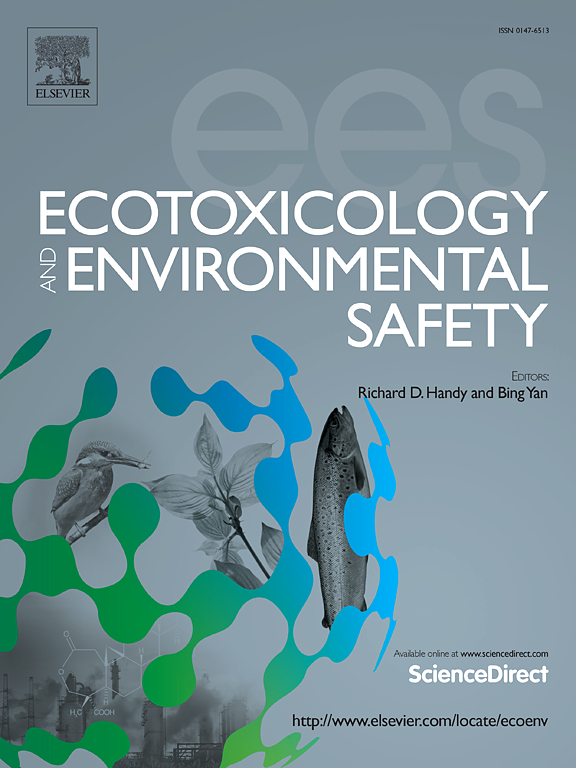Single-cell RNA sequencing identifies cellular heterogeneity in endothelial and epithelial cells associated with nitrogen dioxide-induced acute lung injury
IF 6.2
2区 环境科学与生态学
Q1 ENVIRONMENTAL SCIENCES
引用次数: 0
Abstract
Inhalation of nitrogen dioxide (NO2), a representative irritant gas, can trigger acute lung injury (ALI), typically characterized by increased permeability and dysfunction of the blood-air barrier. However, the exact mechanisms underlying NO2 inhalation-induced ALI (NO2-ALI) remain poorly understood. Using single-cell RNA sequencing (scRNA-seq), we identified significant alterations in endothelial and epithelial cells during NO2-ALI. Notably, leucine-rich alpha-2-glycoprotein 1 (Lrg1) and uncoupling protein 2 (Ucp2), which have been implicated in ALI progression, were significantly upregulated in endothelial cells following NO2 exposure (P < 0.05 compared to control). General capillaries (GCs) potentially function as stem cells, facilitating endothelial cell repair and recruiting neutrophils to amplify inflammatory responses. Furthermore, a novel subpopulation of epithelial cells, identified as lymphocyte antigen 6 A+ (Ly6a) alveolar cells, showed a significant increase in abundance (P < 0.05 compared to control) and played a pivotal role in alveolar epithelial cell differentiation after NO2 inhalation. Overall, these findings shed insights into the pathogenic roles of endothelial and epithelial cells in NO2-ALI.
单细胞RNA测序鉴定了与二氧化氮诱导的急性肺损伤相关的内皮和上皮细胞的细胞异质性
二氧化氮(NO2)是一种典型的刺激性气体,吸入可引发急性肺损伤(ALI),其典型特征是血气屏障通透性增加和功能障碍。然而,吸入NO2诱导的ALI (NO2-ALI)的确切机制仍然知之甚少。通过单细胞RNA测序(scRNA-seq),我们发现了NO2-ALI期间内皮细胞和上皮细胞的显著变化。值得注意的是,与ALI进展有关的富含亮氨酸的α -2-糖蛋白1 (Lrg1)和解偶联蛋白2 (Ucp2)在暴露于NO2后的内皮细胞中显著上调(P <; 0.05)。一般毛细血管(GCs)可能具有干细胞的功能,促进内皮细胞修复和招募中性粒细胞来放大炎症反应。此外,一种新的上皮细胞亚群,被鉴定为淋巴细胞抗原6 a + (Ly6a)肺泡细胞,与对照组相比,丰度显著增加(P <; 0.05),并在吸入NO2后的肺泡上皮细胞分化中起关键作用。总的来说,这些发现揭示了内皮细胞和上皮细胞在NO2-ALI中的致病作用。
本文章由计算机程序翻译,如有差异,请以英文原文为准。
求助全文
约1分钟内获得全文
求助全文
来源期刊
CiteScore
12.10
自引率
5.90%
发文量
1234
审稿时长
88 days
期刊介绍:
Ecotoxicology and Environmental Safety is a multi-disciplinary journal that focuses on understanding the exposure and effects of environmental contamination on organisms including human health. The scope of the journal covers three main themes. The topics within these themes, indicated below, include (but are not limited to) the following: Ecotoxicology、Environmental Chemistry、Environmental Safety etc.

 求助内容:
求助内容: 应助结果提醒方式:
应助结果提醒方式:


